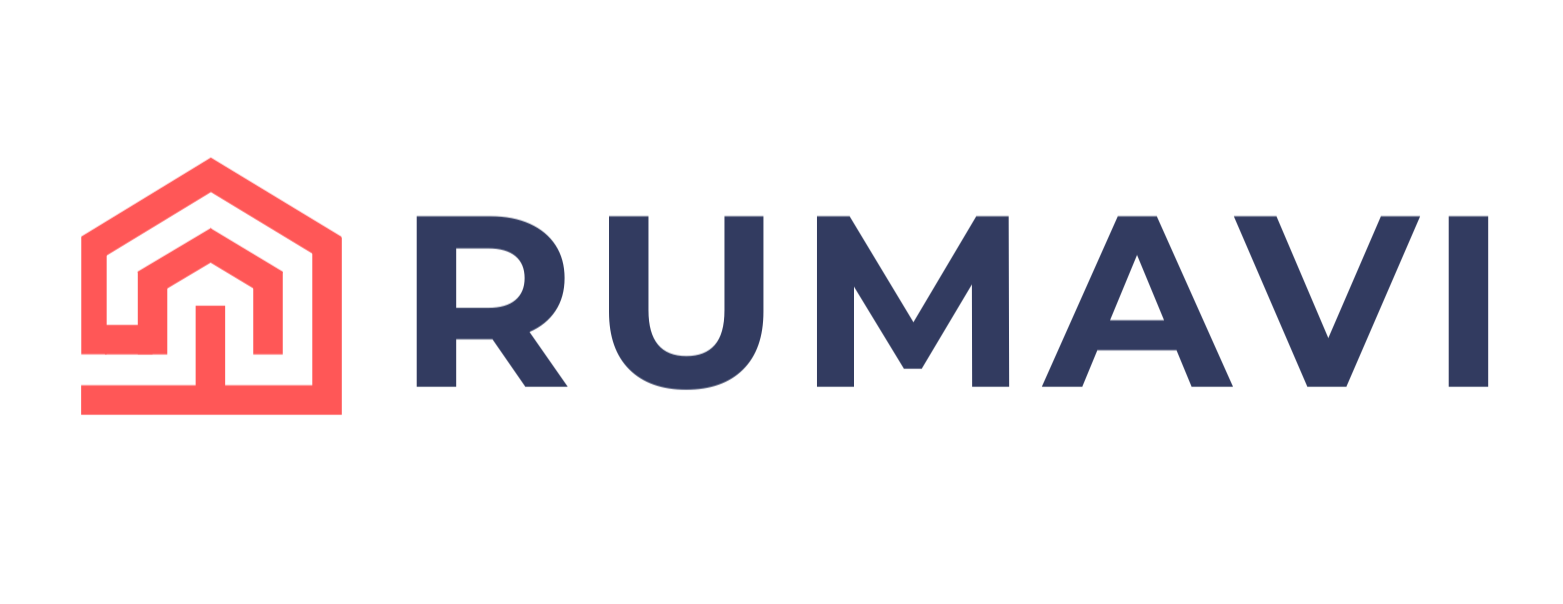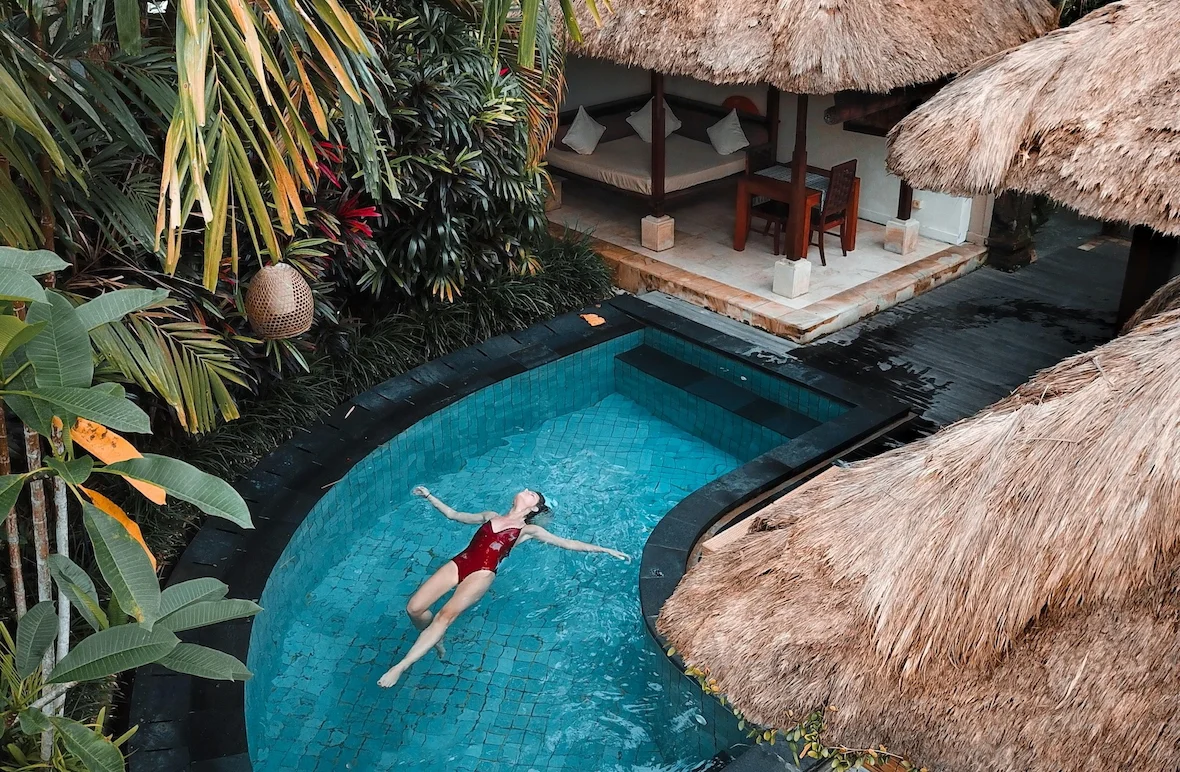Bali's villa market continues to attract international investors seeking both lifestyle benefits and solid financial returns. With tourism reaching 6.3 million international visitors in 2024 and rental yields ranging from 7-15% in prime locations, the island offers compelling opportunities for those who understand the market dynamics, legal frameworks, and emerging risks. This comprehensive guide examines verified data from 2024-2025 to help you make informed investment decisions in one of Southeast Asia's most sought-after property markets.
The Bali Property Market in 2025: Current Performance Data
Bali's property market has demonstrated remarkable resilience and growth through 2024-2025, driven by strong fundamentals that continue to attract both lifestyle buyers and serious investors.
Tourism Recovery Fuels Rental Demand
According to official statistics from the Bali Central Bureau of Statistics, the island welcomed 6.33 million international visitors in 2024, representing a 19.5% increase from the previous year. This figure surpassed pre-pandemic levels and exceeded initial government projections of 5.5-6 million arrivals. For 2025, authorities have set targets of 6.5 million international visitors, underpinning sustained demand for short-term and mid-term villa rentals.
The visitor composition remains diverse, with Australian tourists leading at approximately 23% of total arrivals, followed by strong contingents from India (11.3%), China, and European markets. This diversity helps stabilize occupancy rates throughout the year, reducing seasonal volatility.
Verified Rental Yield Performance
Current market data indicates that villas in Bali's established tourist zones are generating gross rental yields between 7-15% annually. These figures are supported by multiple industry sources including property management companies and real estate agencies operating across the island.
Premium and luxury villas with professional management, strong amenities, and strategic locations in areas like Seminyak, Canggu, and Uluwatu are achieving the upper end of this range. Well-managed luxury properties with 2-3 bedrooms report net yields of 8-12% after deducting operational costs, with annual gross rental income between $40,000-$90,000 for top performers maintaining 80-85% occupancy rates.
It's critical to distinguish between gross and net yields. Gross yields represent total rental income as a percentage of property value, while net yields account for all operating expenses including property management fees (typically 10-20% of rental income), maintenance, taxes, utilities, and periodic renovations. Investors should expect operational costs to consume 30-50% of gross rental income in most scenarios.
Property Price Ranges and Entry Points
Realistic Investment Thresholds
Entry-level villa investments in Bali typically begin around $100,000-$150,000 for small 1-2 bedroom properties in emerging areas such as Tabanan, parts of Ubud, or fringe coastal zones. These represent leasehold properties in locations with developing infrastructure.
Mid-market villas in established areas like Canggu, Seminyak, and Berawa range from $300,000-$700,000, while premium beachfront or hillside properties in prime locations can exceed $1 million. Recent data from Q1 2025 shows median villa prices rose significantly year-over-year, with Berawa, Canggu, and Pererenan experiencing the strongest appreciation.
Price Appreciation Trends
Well-located villa zones in Bali have experienced consistent annual price appreciation of 7-15% over recent years. Emerging areas like Pererenan, Seseh, and Bingin have shown particularly strong growth, sometimes exceeding 10-15% annually as infrastructure improvements enhance accessibility and amenities.
However, this appreciation varies significantly by micro-location. Properties in saturated zones or those lacking differentiation may experience slower growth, while unique properties in growth corridors continue to command premium valuations.
Legal Ownership Structures for Foreign Investors
Understanding legal ownership options is fundamental to safe villa investment in Bali. Indonesian law reserves freehold title (Hak Milik) exclusively for Indonesian citizens, but several legitimate alternatives exist for foreign investors.
Leasehold Arrangements (Hak Sewa)
The most straightforward option involves leasing land or completed villas for terms typically ranging from 25-30 years, with renewal options. Initial lease terms and extension conditions should be clearly documented in the lease agreement. Investors should budget for potentially substantial lease extension costs (typically 30% or more of current property value) when the term expires.
Right to Use (Hak Pakai)
Hak Pakai titles grant foreigners the right to use land for residential purposes, initially for up to 30 years with the possibility of renewal. This title type offers more security than basic leasehold but still doesn't convey ownership in the freehold sense.
PT PMA Structure (Foreign Investment Company)
Establishing a PT PMA (Perseroan Terbatas Penanaman Modal Asing) allows a foreign-owned company to hold Hak Guna Bangunan (HGB) titles, which grant building and operational rights. This structure provides longer-term control and is commonly used for commercial operations, villa development, and investment properties. PT PMA arrangements require minimum capital investment, proper licensing, and ongoing compliance with Indonesian corporate regulations.
Important: Avoid nominee arrangements where Indonesian citizens hold freehold title on behalf of foreign investors. These structures carry significant legal and practical risks and are not recognized as legitimate ownership pathways under Indonesian law.
Key Factors Driving Investment Returns
Location and Accessibility
Properties located near beaches, surf breaks, wellness centers, dining precincts, and with reliable road access command higher occupancy rates and nightly rates. Emerging zones like Pererenan and Seseh are gaining traction as infrastructure develops, while established areas like Seminyak maintain premium positioning through mature amenities and brand recognition.
Property Quality and Guest Experience
Modern design, private pools, high-quality furnishings, reliable Wi-Fi, and consistent maintenance standards directly impact booking rates and guest reviews. Properties delivering strong guest satisfaction generate repeat bookings and command premium pricing. Investment in quality construction and ongoing upkeep is non-negotiable for maximizing returns.
Professional Property Management
Self-managed properties typically underperform compared to those under professional management. Experienced management companies handle marketing across multiple platforms, guest communications, maintenance scheduling, cleaning standards, and regulatory compliance. While management fees of 10-20% of rental income represent a significant cost, professional operators typically deliver higher occupancy rates and better long-term property condition.
Dynamic Pricing Strategy
Successful operators adjust pricing based on seasonality, local events, competitor rates, and length of stay. Offering discounts for longer bookings, creating packages with experiences, and maintaining competitive positioning during shoulder seasons helps optimize annual revenue and reduce vacancy periods.
Comparative Analysis: Bali vs. Regional Alternatives
Phuket, Thailand
Phuket's villa market offers comparable or slightly higher rental yields, with properties in high-demand zones like Bang Tao and Cherngtalay achieving 8-10% returns for premium offerings, and some properties exceeding 10% annually. However, villa acquisition costs in Phuket, particularly for beachfront locations, are generally higher than Bali. Entry-level properties start around 10-15 million THB ($300,000-$470,000), while prime estates can exceed 200-500 million THB.
Phuket benefits from more straightforward foreign ownership rules for condominiums (freehold ownership up to 49% of building units) and established leasehold frameworks for villas. The market is more mature with deeper liquidity but also faces similar oversupply concerns in saturated zones.
Emerging Indonesian Markets
Lombok and other Indonesian destinations offer lower entry prices but with trade-offs in infrastructure maturity, amenity density, and management service availability. While potential returns exist, these markets require higher risk tolerance and longer investment horizons.
Critical Risks and Regulatory Changes
Construction Moratorium on Agricultural Land
In response to devastating floods in 2024 and concerns about overdevelopment, Bali Governor Wayan Koster announced regulations prohibiting new hotel, villa, restaurant, and nightclub construction on productive agricultural land, particularly rice fields. These regulations, expected to be enforced from late 2025, are part of Bali's 100-year sustainable development plan.
The moratorium initially targets densely developed areas including Denpasar, Badung, Gianyar, and Tabanan, while also protecting agricultural zones across six districts: Tabanan, Jembrana, Buleleng, Bangli, Karangasem, and Klungkung. This policy aims to preserve remaining farmland, reduce flood risks, and manage tourism intensity.
Investment Implications: Existing properties in restricted zones may experience enhanced scarcity value, while areas still open to development could see accelerated activity. Investors should verify zoning status and building permits carefully, as enforcement mechanisms are being established.
Oversupply in Saturated Markets
Popular areas like Canggu and Seminyak have experienced rapid villa development from 2022-2024, with many projects reaching completion in 2024-2025. This supply surge has created competitive pressure on rental rates in certain micro-markets, requiring more aggressive pricing and marketing to maintain occupancy.
Differentiation through unique design, superior service, or strategic amenities becomes increasingly important in markets with abundant supply. Generic properties in saturated zones may underperform projections.
Rising Operational Costs
Construction material costs, labor wages, and utility expenses have increased significantly in recent years. Property maintenance, staff salaries, and renovation costs continue to rise, potentially compressing margins unless rental rates keep pace. Investors should budget conservatively for ongoing cost inflation of 5-10% annually.
Due Diligence Requirements
Title verification, permit validation, zoning compliance, and legal structure review are essential. Work exclusively with licensed notaries (PPAT), reputable legal advisors, and established real estate agencies. Verify that all building permits (IMB or PBG certificates) are properly issued and that land use classification permits the intended commercial activity.
Sample ROI Scenarios for 2025
Note: Net ROI figures assume 30-50% operating expenses deducted from gross income, including management fees, maintenance, utilities, taxes, and insurance. Actual performance varies based on property condition, management quality, and market positioning.
Market Projections for 2025-2028
Based on current trends, infrastructure development, and regulatory frameworks, several key dynamics are likely to shape Bali's villa investment landscape through 2028:
- Yield Compression in Prime Locations: Average net yields in established prime areas will likely stabilize in the 9-12% range for well-executed properties, with some compression from peak levels as supply increases and competition intensifies.
- Continued Price Appreciation: Annual price growth of 5-10% in prime zones and potentially 10-15% in emerging areas with infrastructure improvements appears sustainable, though not guaranteed.
- Experience-Driven Differentiation: Properties offering sustainability features, wellness amenities, cultural experiences, and eco-credentials will command growing premiums. These characteristics are transitioning from optional to essential for premium positioning.
- Legal Framework Evolution: Clearer regulations around PT PMA structures, potential investor visa programs, and second-home visa schemes may streamline foreign ownership pathways, reducing uncertainty and transaction friction.
- Market Selectivity: As the market matures and regulatory enforcement strengthens, distinction between well-conceived investments with proper legal structures and marginal properties will become more pronounced. Quality, location, and compliance will increasingly determine success.
Practical Investment Recommendations
For First-Time Bali Investors
- Target properties in the $300,000-$600,000 range in established areas with proven rental track records
- Prioritize turnkey properties with existing guest reviews and occupancy history
- Engage licensed Indonesian legal counsel to structure ownership properly
- Select properties already under professional management with transparent reporting
- Budget conservatively: assume net yields of 6-8% initially while learning the market
For Experienced Investors
- Consider emerging zones (Seseh, Pererenan, Bingin) where infrastructure development may drive appreciation
- Evaluate development opportunities with proper permits in non-restricted zones
- Build relationships with quality construction teams for villa development or major renovations
- Implement direct booking strategies to reduce OTA commission expenses
- Monitor regulatory changes closely and maintain compliance documentation
Red Flags to Avoid
- Properties without clear, verifiable title documentation
- Nominee arrangements or informal ownership structures
- Properties on agricultural land in restricted zones without proper conversion permits
- Unrealistic yield projections (gross yields above 20% should be questioned)
- Developers or agents unwilling to provide permit documentation
- Properties with unresolved boundary disputes or unclear access rights
Frequently Asked Questions
What rental yield should I realistically expect from a Bali villa investment in 2025?
Realistic net rental yields for well-managed villas range from 7-12% depending on location, property quality, and management effectiveness. Prime properties in Seminyak, Canggu, or Uluwatu with strong amenities and professional management achieve the higher end of this range (9-12% net), while entry-level properties in emerging areas typically yield 6-8% net. Always distinguish between gross yields (before expenses) and net yields (after deducting management fees, maintenance, taxes, and utilities, which typically consume 30-50% of gross income).
Can foreigners legally own villas in Bali?
Foreigners cannot hold freehold (Hak Milik) title, which is reserved for Indonesian citizens. However, legitimate ownership pathways exist through leasehold arrangements (typically 25-30 years), Hak Pakai (right to use) titles, or by establishing a PT PMA (foreign investment company) to hold Hak Guna Bangunan (building rights). Each structure has distinct legal requirements, costs, and renewal processes. Always engage licensed Indonesian legal counsel to structure ownership properly and avoid nominee arrangements, which carry significant legal risks.
How much does it cost to maintain and operate a rental villa in Bali?
Total operating expenses typically consume 30-50% of gross rental income. Major cost categories include property management fees (10-20% of rental income), regular maintenance and repairs ($150-500 monthly), pool and garden maintenance, utilities, property taxes, insurance, guest supplies, and periodic major renovations (5-10% of property value every 5-10 years). Professional management, while representing a significant expense, usually delivers better occupancy rates and property condition than self-management for investors not residing in Bali.
What impact will Bali's construction moratorium have on property values?
The moratorium prohibiting new construction on agricultural land, effective late 2025, may enhance scarcity value for existing properties in affected zones while limiting new supply in areas like parts of Canggu, Tabanan, and other regions with productive farmland. Properties with proper permits in zones still open for development may see accelerated activity. Investors should verify zoning classification and ensure properties are not on restricted agricultural land. The long-term effect will depend on enforcement consistency and whether the moratorium expands or contracts in scope.
Is Bali villa investment better than Phuket or other Southeast Asian markets?
Bali and Phuket offer comparable investment profiles with slightly different characteristics. Phuket typically delivers similar or marginally higher yields (8-10%, sometimes exceeding 10%) but has higher acquisition costs, particularly for beachfront properties. Phuket offers more straightforward freehold condominium ownership for foreigners and a more mature resale market. Bali provides lower entry prices ($100,000-150,000 for emerging areas vs. $300,000+ in Phuket), stronger lifestyle appeal for many buyers, and year-round tourism driven by diverse visitor sources. Choice depends on your budget, legal structure preference, target tenant profile, and personal affinity for each destination.
What is the best location in Bali for villa investment in 2025?
The "best" location depends on your investment strategy. For maximum occupancy and established demand, Canggu, Seminyak, and Uluwatu offer proven track records but face strong competition. For capital appreciation potential, emerging areas like Pererenan, Seseh, and Bingin show promise as infrastructure develops, though with higher execution risk. For lifestyle-focused investment with moderate returns, Ubud appeals to wellness and cultural tourists but has lower rental rates than coastal zones. Evaluate each location based on proximity to amenities, current infrastructure, planned developments, competition density, and alignment with your target guest profile.
How long does it take to see returns on a Bali villa investment?
Cash flow returns (rental income) typically begin immediately if purchasing an established, furnished property with existing booking momentum. However, achieving optimal occupancy rates and refining pricing strategy usually takes 6-12 months. Break-even on initial investment (considering acquisition costs, furnishing, and initial setup) typically occurs in 8-12 years based on net rental yields of 8-10%, though this varies significantly based on leverage, purchase price, and operational performance. Capital appreciation can accelerate overall returns but should not be the sole basis for investment decisions given market volatility and regulatory uncertainty.
What due diligence should I conduct before buying a Bali villa?
Essential due diligence includes: (1) Title verification through licensed notary (PPAT), ensuring proper certificate registration and no encumbrances; (2) Building permit validation (IMB or PBG certificate), confirming structure is legally permitted; (3) Zoning compliance verification, especially avoiding restricted agricultural land; (4) Boundary survey and access rights confirmation; (5) Utility connection verification and capacity; (6) Property condition assessment including structural, electrical, and plumbing systems; (7) Rental history review if applicable; (8) Legal structure review for foreign ownership compliance; (9) Tax obligation clarification; (10) Management company reputation and contract review. Budget 1-2% of purchase price for comprehensive due diligence services.
Conclusion: Strategic Approach to Bali Villa Investment in 2025
Bali's villa investment market offers genuine opportunities for informed investors who approach the market with realistic expectations, proper legal structures, and long-term perspectives. Gross rental yields of 7-15% and net returns of 7-12% for well-managed properties represent attractive performance compared to many developed markets, particularly when combined with lifestyle benefits and capital appreciation potential.
Success requires understanding that Bali is not a passive investment market. Active management, continuous property improvement, regulatory compliance, and adaptation to evolving market conditions separate successful investments from underperforming assets. The construction moratorium, increasing operational costs, and supply growth in saturated areas introduce complexity that rewards careful location selection and quality execution.
Foreign investors should prioritize legal compliance through proper ownership structures, engage experienced local counsel, work with reputable property managers, and maintain realistic financial projections. The market rewards patience, quality, and strategic positioning while punishing shortcuts, poor due diligence, and unrealistic expectations.
For investors considering Bali as part of a broader Southeast Asian property portfolio, the island offers compelling characteristics: lower entry prices than Singapore or Hong Kong, higher yields than most developed markets, year-round tourism stability, and potential for 5-10% annual appreciation in well-selected properties. However, regulatory uncertainty, legal complexity, and operational intensity require greater involvement than passive investment vehicles.
Whether Bali villa investment aligns with your goals depends on your risk tolerance, available capital, operational involvement preference, and 5-10 year outlook on Indonesian property markets and Southeast Asian tourism dynamics. Those who invest time in understanding the market, build strong local relationships, and execute quality-focused strategies can achieve attractive risk-adjusted returns while enjoying one of Asia's most captivating destinations.
Explore Property Opportunities Across Southeast Asia
At Rumavi, we help international investors navigate ASEAN property markets with confidence. Our platform provides transparent information, verified listings, and expert guidance across Indonesia, Thailand, Vietnam, Malaysia, and beyond.
Whether you're exploring villa investments in Bali, condominiums in Bangkok, or beachfront properties in Vietnam, our team provides the local expertise and regional perspective you need to make informed decisions.
Browse Southeast Asia Properties
Join thousands of international investors who trust Rumavi for Southeast Asian property investment guidance.














